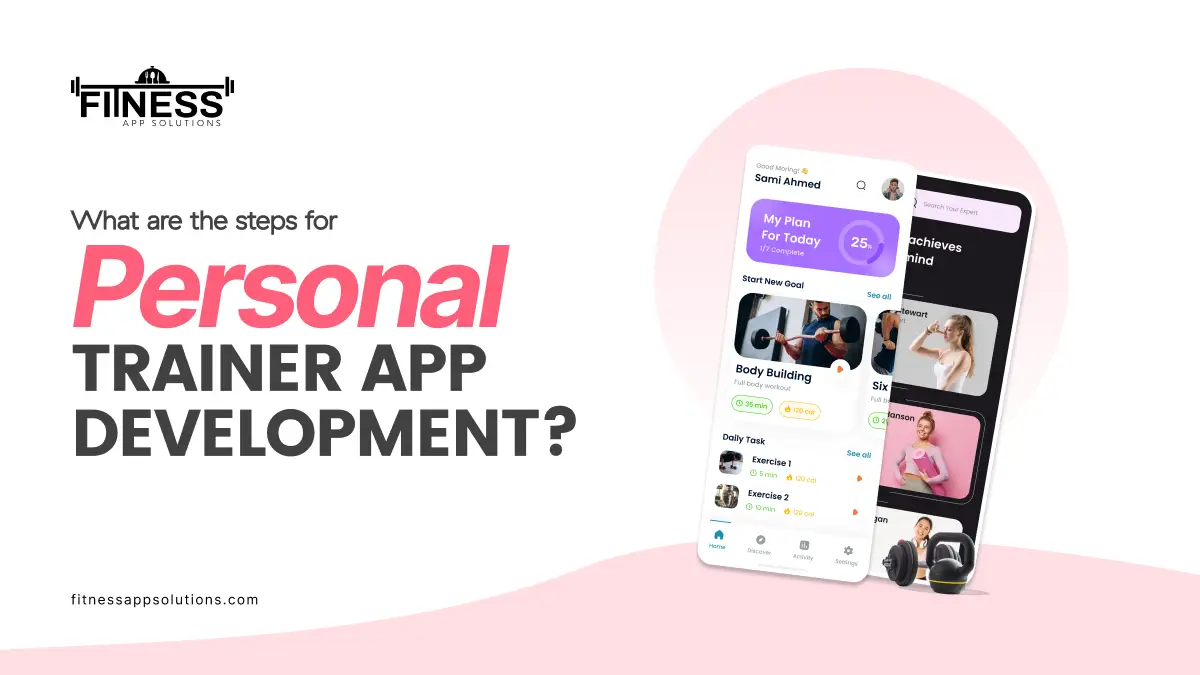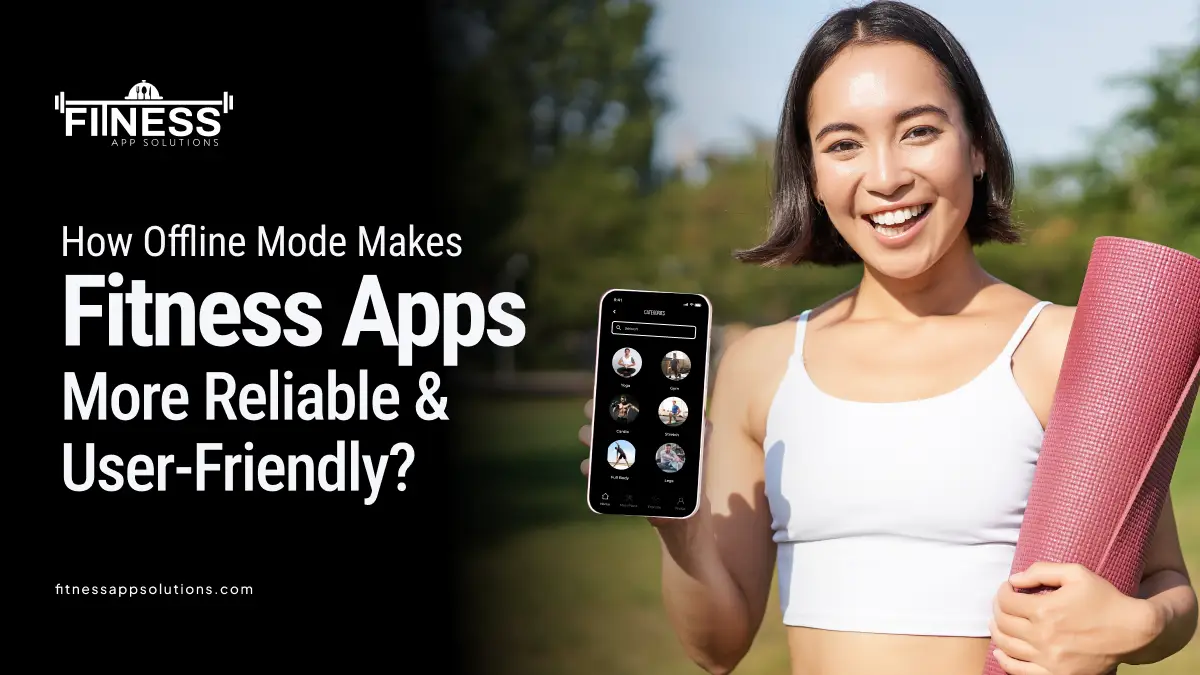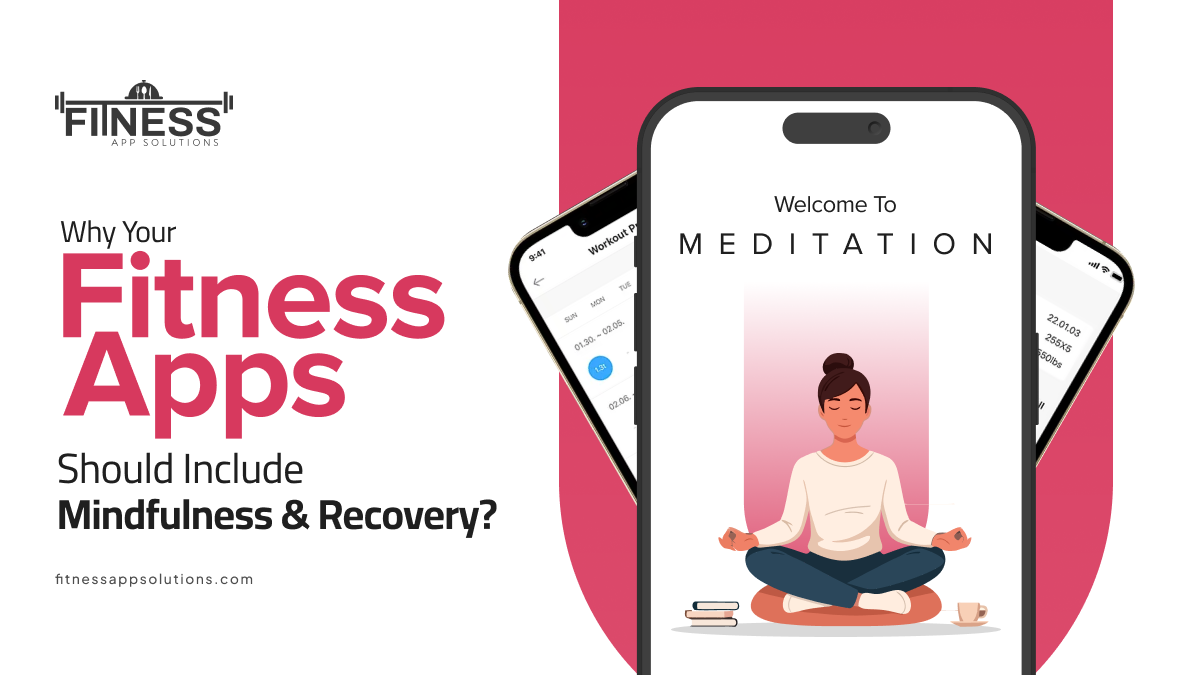In today’s fast-paced world, fitness has become a priority for many individuals. However, with the advancement of technology, there is another solution available to those trying to reach fitness goals in the form of personal trainer apps. In case, you are planning to create a personal trainer app, this guide will take you through the key steps in making sure that you launch your fitness app effectively.
What are the Steps For Personal Trainer App Development?

Step 1: Define Your Goals and Target Audience
Before delving into the development process, you need to set your goals and determine the target audience. Here are a few questions you can ask yourself:
What is the Primary Purpose of the App?
Is it to offer workout plans, nutrition advice or a combination of the two?
Who is your Target Audience?
Are you targeting only beginners, advanced fitness enthusiasts, or particular demographics such as seniors or athletes?
What unique Features will your App Offer?
Think about what makes your app different than current solutions. Different than current solutions.
Answering these questions will give you a better idea of what kind of business you want and who you want to help.
Step 2: Conduct Market Research
Once you identify your goals and know your audience, it’s time to find the market. This step consists of observing the competition with other personal trainer apps to look for trends, strengths and weaknesses. Here’s how to approach this:
Identify Competitors:
Popular personal trainer apps you can find in the market. Do your research about their features, user reviews and pricing models.
Gather User Feedback:
Read user reviews and feedback of these apps. What do they like? What do they hope was different?
Identify Gaps:
Keep an eye on current trends and see if your app can capitalize on them. This might be an unusual feature, a niche target market, or an alternative pricing structure.
Market research will allow you to implement on your app’s idea and confirm that it appeals to potential customers.
Step 3: Create a Feature List
Declare a Features List – Create a must-have features list based on your goals and market research. You have all the following well-known elements of personal trainer apps:
User Profiles:
Option for users to create profiles containing personal details, fitness goals, and preferences.
Workout Plans:
Offer customizable exercise programs based on user goals, fitness levels, and equipment. available.
Nutrition Tracking:
Allow users to log their meals and track their nutritional intake.
Progress Tracking:
Allow users to monitor progress with metrics such as weight, body measurements, and workout performance.
Video Demonstrations:
Provide videos of the exercises so that users know how to do them correctly.
Community Features:
Introduce user-to-user connections through forums or chat to stave off loneliness and motivate progress.
Push Notifications:
Send reminders for workouts, meal, plans and motivational messages via Push Notifications.
A brainstorming session to identify the features will help you in this process, after which you should prioritize the features to get an idea of what features you can include in your MVP and build first.
Step 4: Choose the Right Technology Stack
Choosing the appropriate technology stack is one of the key factors in the development of your personal trainer app. The technology stack encompasses what programming languages, frameworks and tools you’re going to use to develop the app. Some things to think about:
Platform:
Do you want to create a native app, which needs to be specially adapted for (for example) iOS and/or Android, or a cross-platform app? Native apps typically run better, whereas cross-platform apps can be more cost-efficient.
Backend Development:
Pick a backend technology that matches your app’s requirements. Popular options include Node. js, Ruby on Rails or Django.
Database:
Select a database to store user data, workout plans, and other information. Common choices are MySQL, PostgreSQL, and MongoDB.
APIs:
Use third party APIs for payment methods, social sharing, Fitness tracking.
Consult with a app development company to choose the best technology stack for your app.
Step 5: Design the User Interface (UI) and User Experience (UX)
Hence, UI and UX designing of your app should be top notch. Users must be comfortable and easy to use your app. Tips for effective UI/UX design:
Wireframing:
Use wireframes to sketch the app’s layout and flow. It’ll help you map the user journey.
User -Centric Design:
Know your audience. Employ colors, fonts, and layouts that speak to them.
Consistency:
Ensure consistent use of visual elements across the app for an integrated experience.
Feedback Mechanisms:
Add rating and comment systems so you can get the best feedback from users and grow the app along the way.
You might want to do a usability test with potential users to get feedback on your design before proceeding.
Step 6: Develop the App
Here are the steps involved in the development feature of personal trainer app:
Frontend Development:
Here, you build the app’s visual components. Native apps are built using programming languages such as Swift or Kotlin, and cross-platform apps use frameworks such as React Native or Flutter.
Backend Development:
The stage where you configure server, database and application logic. The front end and back end must be secured smoothly, and APIs will be developed with the help of developers.
Integration of Features:
Now developers will implement the features that have been specified in your feature list workout plans, nutrition tracking, progress monitoring, and others.
Testing:
Testing is a vital aspect of the development process. This includes, debugging, confirming that each feature works with everything and making sure that the app is user-friendly. Here are the various types of testing:
Unit Testing:
Testing the individual components, you have to check if they are functional.
Integration Testing:
Making sure that various components of the app function in conjunction with each other.
User Acceptance Testing (UAT):
The key here is to collect input from actual users to see if there are any hiccups or room for optimization.
Step 7: Launch the App
Now that the app is developed and fully tested, it’s time to go live. Your step-by-step guide for a winning launch:
Choose a Launch Date: Give your app a launch date and come up with a marketing plan to hype it up.
Prepare App Store Listings: Test App Store Listing Writing (Apple App Store and Google Play Store) Consider eye-catching descriptions, screenshots, and promotional videos to entice potential users.
Beta Testing: Try hosting a beta for a limited group of users prior to your official launch. This enables you to get feedback and make necessary changes.
Launch Marketing Campaign: Promote your app on social media, email marketing and other channels You might also like to partner with fitness influencers or bloggers to spread the word.
Step 8: Gather User Feedback and Iterate
Once you have published your app, collect user feedback and improve as necessary. Here’s how to tackle this step:
Monitor User Reviews:
Watch app store reviews and ratings. Show your users you value their input by responding to their positive and negative feedback through surveys, ratings, or suggestion boxes.
In-App Feedback Mechanisms:
Integrate analytics for tracking user behavior. Figure out what features are getting all the love, and which could use a little polish.
Use the feedback and data gathered to make improvements and iterates on the app. For example, regular updates keep the users engaged, and it gives the company the authority to stay connected with users for improving their experience.
Step 9: Implement Marketing Strategies for Growth
Meet the Challenges to the Success of Your Personal Trainer App Some have tried ideas like these:
Content Marketing:
Create awesome content about your fitness, nutrition and wellness. Blog posts or videos or even a podcast that draws in potential users for your app.
Social Media Marketing:
Market your app using platforms like Instagram, Facebook, TikTok, etc. Building an online community around your brand is also an effective way to keep your customers engaged.
Email Marketing:
Use your website to collect email addresses and send out newsletters with updates, tips, and promotions regularly. This will prepare these users to come back and use your app regularly.
Referral Programs:
Why not set up a referral scheme rewarding users for getting friends signed up to the app? By doing so you can increase your user base organically.
Step 10: Monitor Performance and Scale
Once your app is launched and you’ve executed your app marketing strategies, you would need to keep monitoring its performance and look for opportunities to scale. Some important areas to cover here are:
User Retention:
This shows how many users are returning compared to your overall users. Leverage user retention strategies such as introducing user specific workout plans or gamifying interfaces.
Performance Metrics:
Track downloads, active users, and revenue. This data should be used to steer decisions about future updates and marketing efforts.
Expand Features:
When your user base grows, analyze the reviews and feedback to understand the features that your users would like your app to have. This may involve introducing new workout programs, nutrition plans, and community features.
Explore Partnerships:
Seek out opportunities for collaborations with fitness brands, nutrition companies or gyms. Partnering with someone can help you expand your audience and improve your app’s value.
Conclusion
Developing a personal trainer app involves proper planning, research, and execution. From defining your goals, to conducting market research, to launching the app and implementing marketing strategies, following the above steps, you can create an app that fits the needs of fitness enthusiasts. And keep in mind that as the fitness industry is changing all the time, being flexible and responsive to user needs will be best for your app in the long run. And this is how to successfully reach clients as your personal trainer app, with determination and the right agenda, can become a people’s objective that can successfully help them lead towards their goal of being fit.
Frequently Asked Questions (FAQs)
1.What is a personal trainer app?
A personal trainer app is a mobile application that help the users to fulfil their fitness goals.
2.What features one can include in personal trainer app?
Essential feature to be included are user profile, customization of workout plans and meal plans, push notification, and many other features.
3.How should I ensure my app is user friendly?
To ensure a user-friendly app, focus on intuitive design, easy navigation, and clear instructions for users.
4.Can I monetize my personal trainer app?
Yes, there are several monetization strategies you can consider, including subscription models, in-app purchases, advertising, and offering premium features.
5.Should I develop a native app or cross platform app?
The choice between native app and cross platform app clearly depends upon your budget, target audience, and features you want to include.



